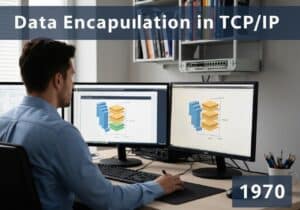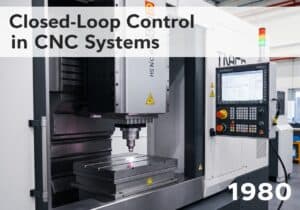Il modello di integrazione delle capacità (Capability Maturity Model Integration, CMMI) è emerso come un'importante struttura per le organizzazioni che cercano di migliorare l'efficienza dei loro processi, in particolare in campi come lo sviluppo del software, l'ingegneria dei sistemi e la gestione dei servizi IT. Nato dal Modello di Maturità delle Capacità (CMM), il CMMI offre un quadro completo dei processi di sviluppo. tabella di marcia per le organizzazioni di raggiungere prestazioni più elevate attraverso cinque distinti livelli di maturità: Iniziale, Gestito, Definito, Gestito quantitativamente e Ottimizzato.
Punti Chiave

- La CMMI migliora capacità di processo per le organizzazioni
- Cinque livelli di maturità guidano la progressiva crescita organizzativa
- Le aree di processo si allineano alla maturità per migliorare le prestazioni
- I metodi di valutazione valutano la conformità e lo stato di miglioramento.
- L'adozione di CMMI produce una migliore qualità e prevedibilità
Definizione e scopo dell'integrazione del modello di maturità delle capacità CMMI
Il Capability Maturity Model Integration (CMMI) è un quadro strutturato finalizzato al miglioramento dei processi organizzativi. Il CMMI fornisce alle organizzazioni gli strumenti essenziali per migliorare i propri processi. software sviluppo, ingegneria dei sistemi, gestione dei servizi IT e altre aree correlate. La sua implementazione porta alla creazione di pratiche standardizzate, garantendo coerenza e prevedibilità in più progetti.

Uno degli scopi principali del CMMI è quello di delineare un percorso chiaro che consenta alle organizzazioni di evolvere dalle pratiche attuali verso processi più maturi ed efficienti. Il modello offre una serie di best practice che le organizzazioni possono adottare passo dopo passo, favorendo il miglioramento continuo.
Il CMMI è suddiviso in diverse costellazioni, ognuna delle quali è stata concepita per rispondere alle esigenze specifiche del settore.
- CMMI per lo sviluppo (CMMI-DEV)
- CMMI per i servizi (CMMI-SVC)
- CMMI per l'acquisizione (CMMI-ACQ)
Questa adattabilità consente alle organizzazioni di selezionare la costellazione CMMI appropriata che si allinea con i loro obiettivi e sfide operative. Il framework sottolinea l'importanza di creare una cultura incentrata sul pensiero orientato ai processi e sull'apprendimento organizzativo.
Mancia: considerare la possibilità di condurre un esercizio di "Process Discovery" all'interno della propria organizzazione prima dell'adozione di CMMI. Si tratta di mappare i processi esistenti per identificare le lacune e le aree di miglioramento. Questa preparazione può semplificare la successiva implementazione di CMMI e rafforzare l'adesione degli stakeholder grazie a una maggiore chiarezza sulle capacità attuali e sulle esigenze future.
Storia ed evoluzione dal Modello di Maturità delle Capacità CMM al CMMI
Il Modello di Maturità delle Capacità (CMM) è stato inizialmente sviluppato dal Software Engineering Institute (SEI) della Carnegie Mellon University alla fine degli anni Ottanta. Il suo obiettivo principale era quello di aiutare le organizzazioni a valutare e migliorare i processi di sviluppo del software. Il CMM ha introdotto un quadro strutturato che delinea cinque livelli di maturità, consentendo progressivamente alle organizzazioni di evolvere da processi caotici a processi altamente ottimizzati. Questo modello era inizialmente incentrato sull'ingegneria del software e forniva alle organizzazioni una base per valutare le loro pratiche e implementare miglioramenti nella qualità del software, nei costi e nei tempi.

Con l'espansione dell'ingegneria e della gestione all'ingegneria dei sistemi e alla gestione dei servizi IT, è diventata evidente la necessità di un approccio più integrato. Così, nel 2002, è stato introdotto il CMMI, che ha unito diversi framework di miglioramento dei processi in un unico modello.
Il CMMI ha integrato le migliori pratiche del CMM, del Systems Engineering Capability Model e dell'Integrated Product Development Capability Model, tra gli altri.
Il modello ha mantenuto i cinque livelli di maturità, ma ha ampliato in modo significativo le aree di processo. Ad esempio, il CMMI ha introdotto ulteriori aree di interesse come la gestione del rischio e la gestione integrata dei progetti, rendendolo più versatile per diversi settori.
| Anno | Modello | Focus principale |
|---|---|---|
| 1989 | CMM | Sviluppo di software |
| 2002 | CMMI | Miglioramento integrato dei processi |
Mancia: Quando adottano il CMMI, le organizzazioni devono condurre un'analisi dei gap dei loro processi attuali rispetto al framework CMMI per identificare efficacemente le aree di miglioramento.
I cinque livelli di maturità del quadro CMMI
I cinque livelli di maturità del framework Capability Maturity Model Integration (CMMI) costituiscono un percorso strutturato per le organizzazioni che intendono migliorare i propri processi. Ogni livello si basa sul precedente, rappresentando una progressione verso una maggiore capacità e istituzionalizzazione dei processi. Le caratteristiche di ogni fase sono definite come segue:

Livello di maturità 1: iniziale
- Caratteristiche: I processi a questo livello sono tipicamente ad hoc e caotici. Il lavoro può essere portato a termine, ma è spesso imprevedibile, reattivo e spesso in ritardo e fuori budget. Il successo si basa molto sullo sforzo individuale piuttosto che su processi definiti.
- Crescita organizzativa: l'organizzazione inizia a riconoscere la necessità di migliorare i processi, ma non dispone di pratiche consolidate.
Livello di maturità 2: gestito
- Caratteristiche: I processi di base per la gestione dei progetti sono stabiliti per tenere traccia di costi, tempistiche e funzionalità. I progetti sono pianificati, eseguiti, misurati e controllati a livello di progetto, ma non necessariamente standardizzati in tutta l'organizzazione. Esiste la disciplina per ripetere i successi precedenti su progetti simili.
- Crescita organizzativa: l'organizzazione inizia a gestire i progetti con processi definiti, portando a risultati più prevedibili per i singoli progetti. Ci sono ancora problemi da risolvere a livello organizzativo più ampio.
Livello di maturità 3: definito
- Caratteristiche: I processi sono ben caratterizzati, documentati, standardizzati e integrati nei processi standard dell'organizzazione. Gli standard dell'organizzazione forniscono una guida per i progetti, i programmi e i portafogli. Tutti i progetti utilizzano una versione approvata e personalizzata dei processi standard dell'organizzazione per sviluppare e mantenere prodotti e servizi. Questo livello è proattivo piuttosto che reattivo.
- Crescita organizzativa: l'organizzazione stabilisce una coerenza e una comprensione comune dei processi tra i diversi progetti e reparti. Questo porta a un miglioramento della qualità e dell'efficienza.
Livello di Maturità 4: Gestione quantitativa
- Caratteristiche: l'organizzazione raccoglie misure dettagliate di prestazioni del processo e la qualità del prodotto. Sia i processi che i prodotti sono compresi e controllati quantitativamente utilizzando tecniche statistiche e altre tecniche quantitative. Gli obiettivi quantitativi per la qualità e le prestazioni dei processi vengono stabiliti e utilizzati come criteri nella gestione dei processi.
- Crescita organizzativa: l'organizzazione acquisisce una comprensione più approfondita delle capacità dei suoi processi e può prevedere le prestazioni. Ciò consente un processo decisionale basato sui dati e un controllo più efficace dei risultati.
Livello di maturità 5: Ottimizzazione
- Caratteristiche: Questo livello si concentra sul miglioramento continuo dei processi. Il miglioramento è reso possibile dal feedback quantitativo del processo e dal pilotaggio di idee innovative e di tecnologie. L'organizzazione è stabile ma flessibile, capace di adattarsi alle mutevoli esigenze aziendali e di migliorare i propri processi in modo proattivo.
- Crescita organizzativa: l'organizzazione ha una cultura del miglioramento continuo e innovazione. I processi vengono continuamente perfezionati e adattati per soddisfare gli obiettivi in evoluzione e migliorare le prestazioni.
È importante notare che il CMMI può essere valutato con due approcci:
- L'approccio per fasi, descritto in precedenza, consente di ottenere una valutazione del livello di maturità da 1 a 5.
- L'approccio continuo consente a un'organizzazione di concentrarsi su aree di processo specifiche e di raggiungere livelli di capacità per ciascuna di esse.
Mancia: dare priorità al coinvolgimento di team interfunzionali nell'implementazione delle aree di processo CMMI. La presenza di prospettive diverse può portare a intuizioni più ricche e ad adattamenti più efficaci dei processi, facilitando in ultima analisi una transizione più agevole tra i livelli di maturità.
Metodi di valutazione per la valutazione CMMI
Appraisal methods employed for Capability Maturity Model Integration (CMMI) compliance primarily fall into two categories: formal and informal appraisals. Formal appraisals, such as the CMMI Institute’s Standard Appraisal Method for...
Avete letto 44% dell'articolo. Il resto è per la nostra comunità. Sei già un membro? Accedi
(e anche per proteggere i nostri contenuti originali dai bot di scraping)
Comunità Innovazione.mondo
Accedi o registrati (100% free)
Visualizza il resto di questo articolo e tutti i contenuti e gli strumenti riservati ai soci.
Solo veri ingegneri, produttori, designer, professionisti del marketing.
Nessun bot, nessun hater, nessuno spammer.

































Qualcuno ha considerato come i livelli CMMI potrebbero interagire con le metodologie agili? Mi sembra un potenziale scontro di culture.
CMMI e agilità possono coesistere. La maturità di un'organizzazione non è un ostacolo all'agilità, ma un catalizzatore.
Certamente! CMMI e Agile non si escludono a vicenda, ma possono completarsi a vicenda.